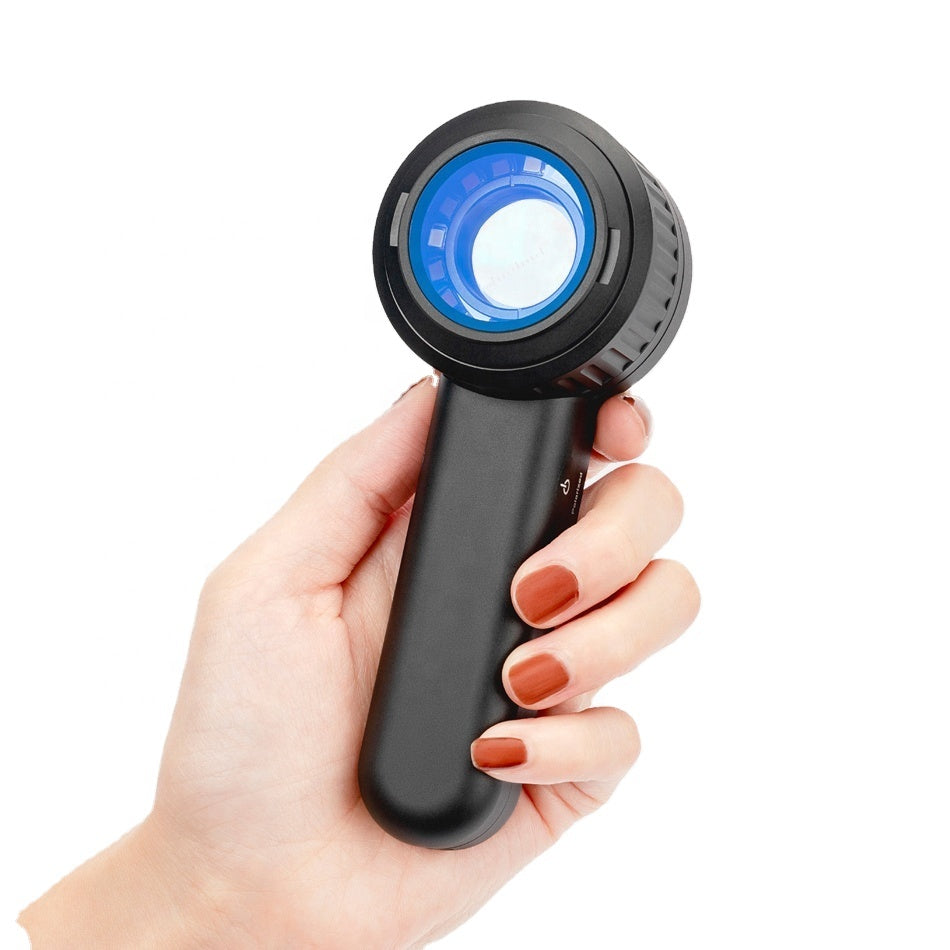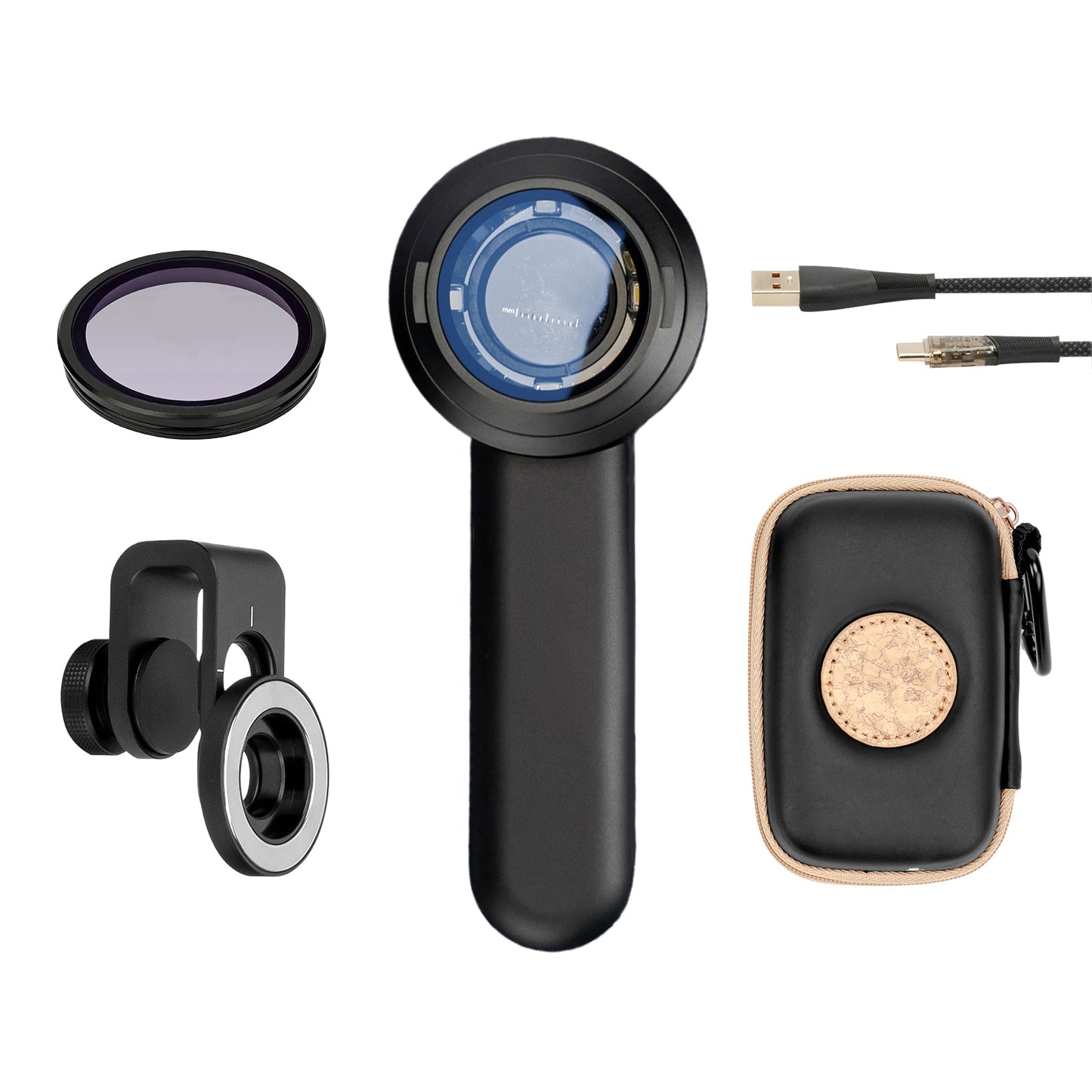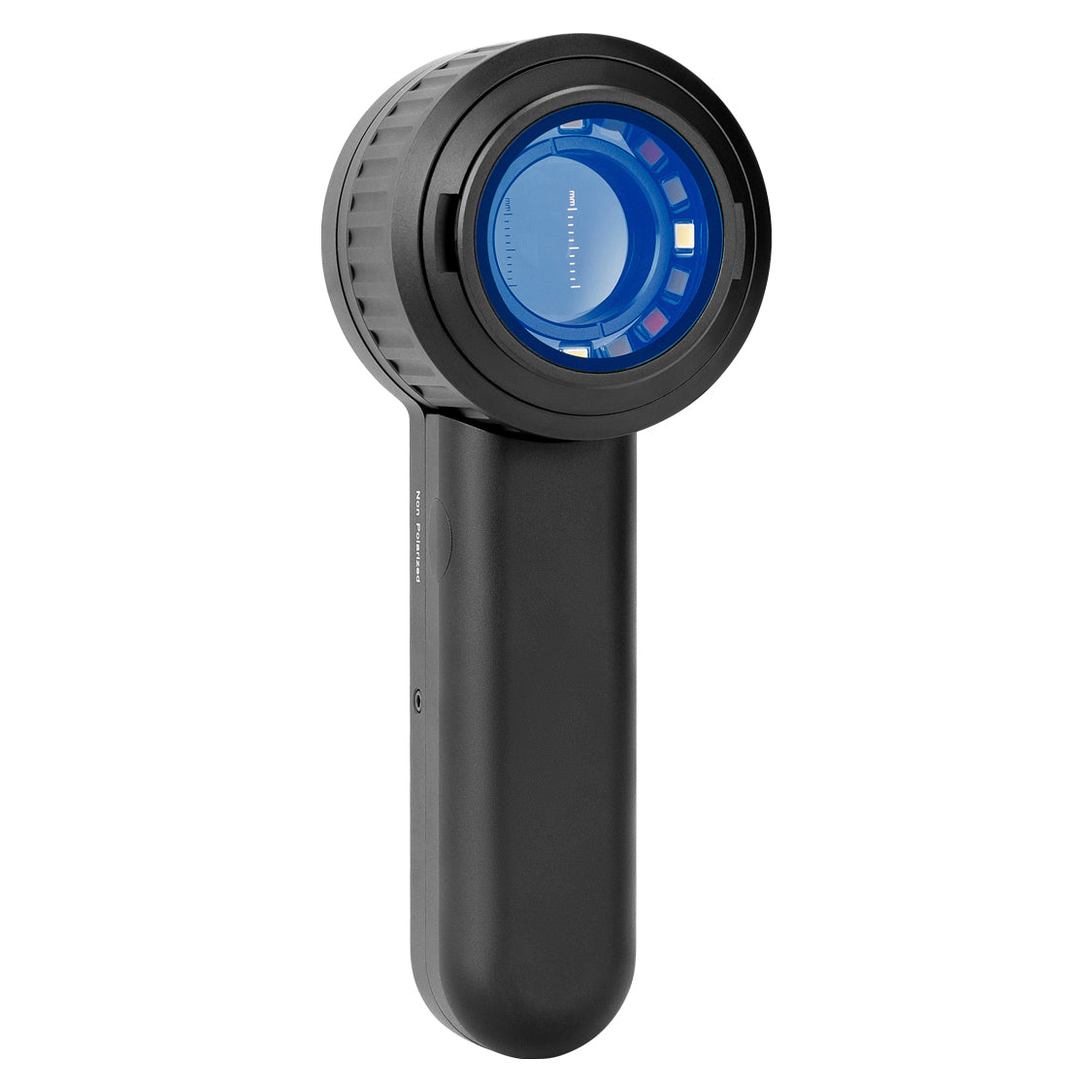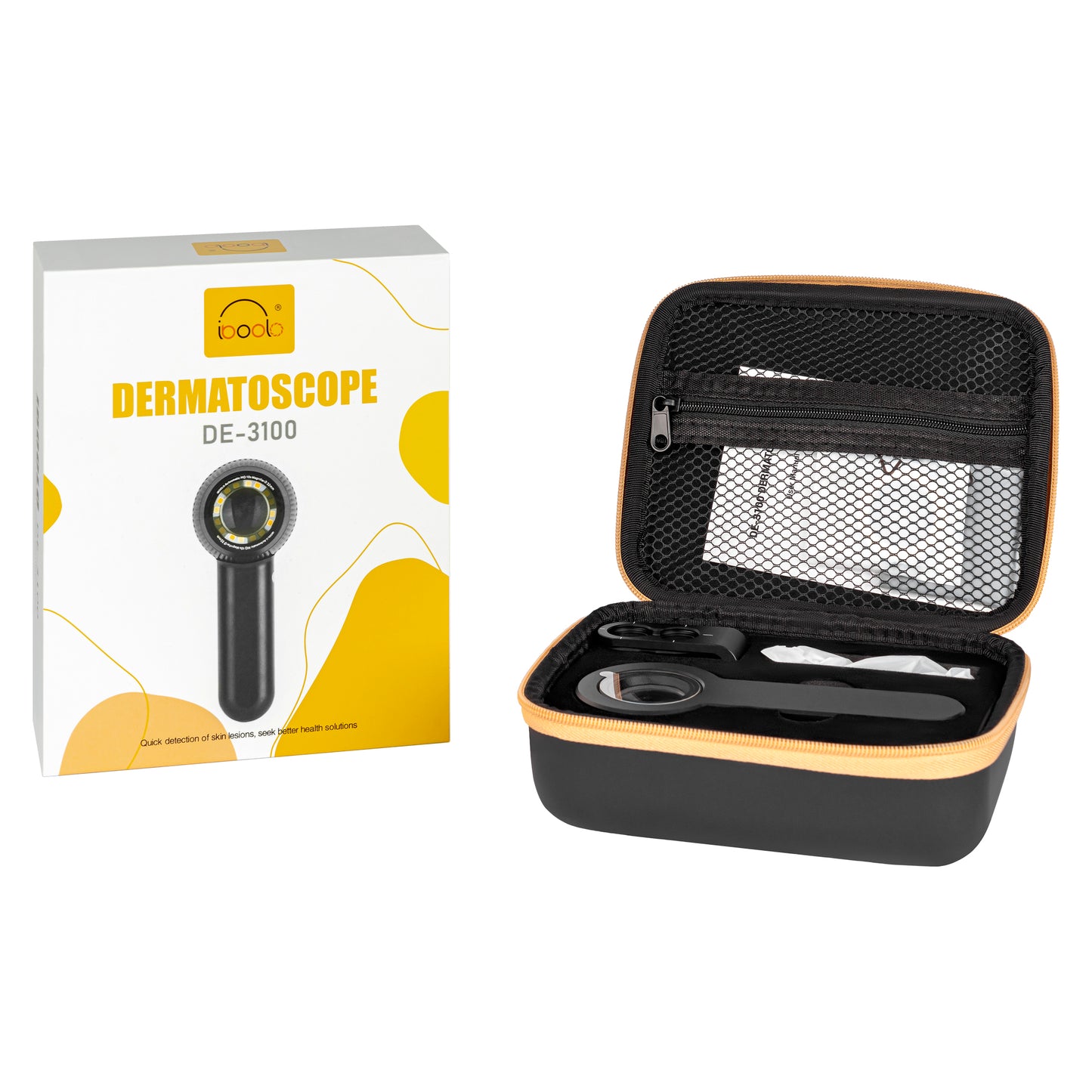Lagerhållningsenhet:
IBOOLO
IBOOLO DE-3100 Budget-Friendly Dermatoscope with Smartphone Adapter for Clinic and Telemedicine
IBOOLO DE-3100 Budget-Friendly Dermatoscope with Smartphone Adapter for Clinic and Telemedicine
Used by Dermatologist in 30+countries
FDA-Cleared CE Certified
Det gick inte att ladda hämtningstillgänglighet
Advantages of DE-3100
Dermatoscope DE-3100 is a both handheld and photo dermatoscope device. DE-3100 designed with a super suitable handheld shape can be used by hands directly. Additionally, it contains a universal phone adapter that is convenient to connect with all of smartphones or tablets to capture images.
• Bright LED illumination lights
• Cross polarized, non-polarized and amber light illumination
• 10 x Magnification
• Real 30mm wide field of view (Aperture)
• Easy detachable protect glass for the lesions that shouldn't be touched
• Lithium-ion battery & USB-C charge
• Automatic shut down

Technical Specifications
| Name | Dermatoscope/Dermoscopy |
| Item | DE-3100 |
| Material | Optical and Aluminum |
| Magnification | 10 times |
| LEDS | 30 LEDS |
| Light | Polarization,non polarization and Amber light |
| Warranty | 2 Years |
| Certificate | CE FDA |
| Standard | ISO13485 ISO14001 |
| Brightness | 1 |
| Battery | 1000mAh |
DE-3100 Dermatoscope Features
The DE-3100 dermatoscope has garnered widespread acclaim for its pocket-sized, ergonomic design. When using the DE-3100, you'll be treated to exceptionally clear views of the skin, with every detail magnified 10 times for precise examination.
Moreover, its innovative magnetic adapter design simplifies the process of connecting it to your phone's camera. With the phone adapter, you can effortlessly attach the dermatoscope to your smartphone and capture images in just 5 seconds. What's more, it boasts universal compatibility, working seamlessly with all smartphones currently available on the market. By taking photos once a month, you can effectively track and monitor any significant changes in your skin, paving the way for more thorough and insightful analysis. Regular skin examinations are truly crucial!

Lighting System
The DE-3100 dermatoscope contain 3 models light system which is polarized,non polarized and amber light, available in different lesion diagnose situation.
The non polarized light is mainly used to observe superficial skin lesions with the help of visible light;
The polarized light can help to eliminate surface reflection and allow visualization of vascular structures. The instrument allows for visualization for deeper skin structures, such as blood vessels, collagen, and pigment in the dermis.
The amber light is utilized to improve the distinction between the skins surface and deeper layers for images when evaluating color inconsistencies and pigmentation on the skin.


Iboolo DE-3100 Handheld Dermatoscope: The Affordable, Versatile Dermoscopy Device for Modern Practice
Discover the Iboolo DE-3100 Handheld Dermatoscope, a groundbreaking dermoscopy device designed to revolutionize skin examination. Engineered for precision and ease of use, the DE-3100 stands out as a top-tier solution that is also remarkably affordable dermoscopy for clinics, educational institutions, and telemedicine professionals worldwide. This comprehensive guide will explore the advanced features of the DE-3100, highlighting its capabilities as an essential dermoscopy device, a leading option for affordable dermoscopy, and a robust telemedicine dermatoscope.
Experience the perfect blend of high performance and cost-effectiveness with a dermoscopy device that delivers clarity, convenience, and versatility for all your diagnostic needs.
The DE-3100: Setting New Standards for Affordable Dermoscopy
The pursuit of high-quality diagnostic tools often comes with a hefty price tag, but the Iboolo DE-3100 Handheld Dermatoscope challenges this notion. It is meticulously designed to provide professional-grade dermoscopy capabilities, making it the benchmark for affordable dermoscopy without compromising on precision or reliability.
Unbeatable Value in an Affordable Dermoscopy Device:
- Cost-Effective Innovation: The DE-3100 offers a feature set comparable to much more expensive models, proving that affordable dermoscopy doesn't mean settling for less.
- Exceptional Image Clarity: With its advanced optics and illumination, this dermoscopy device delivers crisp, high-resolution images, crucial for accurate diagnosis of various skin conditions.
- Durable & Ergonomic Design: Crafted for comfortable and extended use, its robust build ensures longevity, making your investment in affordable dermoscopy truly worthwhile.
- Reduced Operating Costs: Minimal maintenance requirements and efficient battery life contribute to the long-term affordability of the DE-3100.
The Iboolo DE-3100 makes professional dermoscopy accessible to every practitioner, reinforcing its position as a premier choice for affordable dermoscopy solutions.
Beyond Expectations: The Versatile Dermoscopy Device for Every Clinical Need
The Iboolo DE-3100 Handheld Dermatoscope is more than just an economical choice; it's a powerful and versatile dermoscopy device engineered to excel across a broad spectrum of dermatological applications. Its comprehensive features empower clinicians to perform detailed skin examinations with confidence and efficiency.
Key Features of this Advanced Dermoscopy Device:
- Multi-Mode Illumination: Equipped with polarized, non-polarized, and UV (365nm) light modes, the DE-3100 provides unparalleled flexibility to visualize various skin structures and conditions, from superficial textures to deep pigment networks and UV-fluorescent lesions.
- High Magnification (10x-20x): Achieve precise magnification to detect subtle changes in skin lesions, critical for early diagnosis of melanoma, basal cell carcinoma, and other dermatoses.
- Digital Integration: Seamlessly connects to smartphones or PCs, allowing for effortless image capture, storage, and management. This modern feature transforms the DE-3100 into a smart dermoscopy device for digital record-keeping.
- UV Light for Enhanced Diagnostics: The integrated 365nm UV LED extends the device's utility, serving as an effective UV inspection tool for conditions that fluoresce, offering broader diagnostic capabilities than many standard dermoscopy device options.
The Iboolo DE-3100 proves that a single dermoscopy device can deliver both exceptional performance and outstanding value.
The DE-3100: Your Essential Telemedicine Dermatoscope
In the rapidly expanding world of remote healthcare, the Iboolo DE-3100 Handheld Dermatoscope emerges as an indispensable telemedicine dermatoscope. Its design and functionalities are perfectly aligned with the demands of virtual consultations, enabling clinicians to provide accurate dermatological assessments regardless of geographical barriers.
Optimized for Telemedicine Dermoscopy:
- High-Quality Image Transmission: The DE-3100 captures clear, detailed images that are vital for remote diagnosis, ensuring that subtle features are not lost during transmission.
- Seamless Smartphone Connectivity: Easily connect to a smartphone to capture images and securely transmit them to remote specialists, making it an ideal telemedicine dermatoscope for field use or home monitoring.
- Efficient Workflow: Accelerate tele-dermatology consultations with quick image capture and sharing capabilities, reducing patient wait times and improving access to care.
- Versatile for Remote Screening: Whether for primary care physicians in remote areas or specialists consulting from afar, the DE-3100 functions as a reliable telemedicine dermatoscope, facilitating early detection and follow-up.
Choose the Iboolo DE-3100 as your dedicated telemedicine dermatoscope to bridge the distance in dermatological care, offering timely and accurate virtual consultations.
Key Dermoscopy Applications Powered by the DE-3100
The Iboolo DE-3100's robust feature set allows for a wide range of dermoscopy applications, enhancing diagnostic confidence across various conditions:
- Early Skin Cancer Detection: Identify suspicious patterns associated with melanoma, basal cell carcinoma, and squamous cell carcinoma.
- Inflammatory Skin Conditions: Visualize microvascular changes and specific patterns in psoriasis, eczema, and lichen planus.
- Infectious Diseases: Aid in diagnosing conditions like scabies (tunnels), fungal infections (e.g., tinea) using the UV feature, and viral warts.
- Hair & Nail Disorders: Assess alopecia, onychomycosis, and other conditions with detailed magnification.
- Aesthetic Consultations: Evaluate skin texture, pigmentation, and vascularity before and after cosmetic treatments.
The Iboolo DE-3100 transforms complex dermoscopy into a streamlined, effective process for all medical professionals.
Invest in the Future of Dermoscopy with Iboolo DE-3100
The Iboolo DE-3100 Handheld Dermatoscope is more than just a tool; it's an investment in superior patient care, diagnostic efficiency, and modern medical practice. As an affordable dermoscopy solution, a versatile dermoscopy device, and a reliable telemedicine dermatoscope, it truly stands out in today's market.
Equip your practice with the DE-3100 and experience the clarity, convenience, and confidence that advanced dermoscopy brings. Contact us today to learn how the Iboolo DE-3100 can elevate your diagnostic capabilities.
Package Include
(Small Contact Plate needs buy separately!)

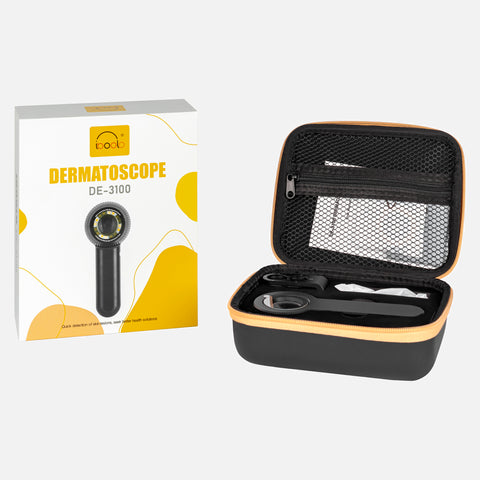
- 3100 Dermatoscope
- Universal Phone Adapter
- Clean Cloth
- USB Cable-C
- Carry Case
- English Version User Manual
Share
